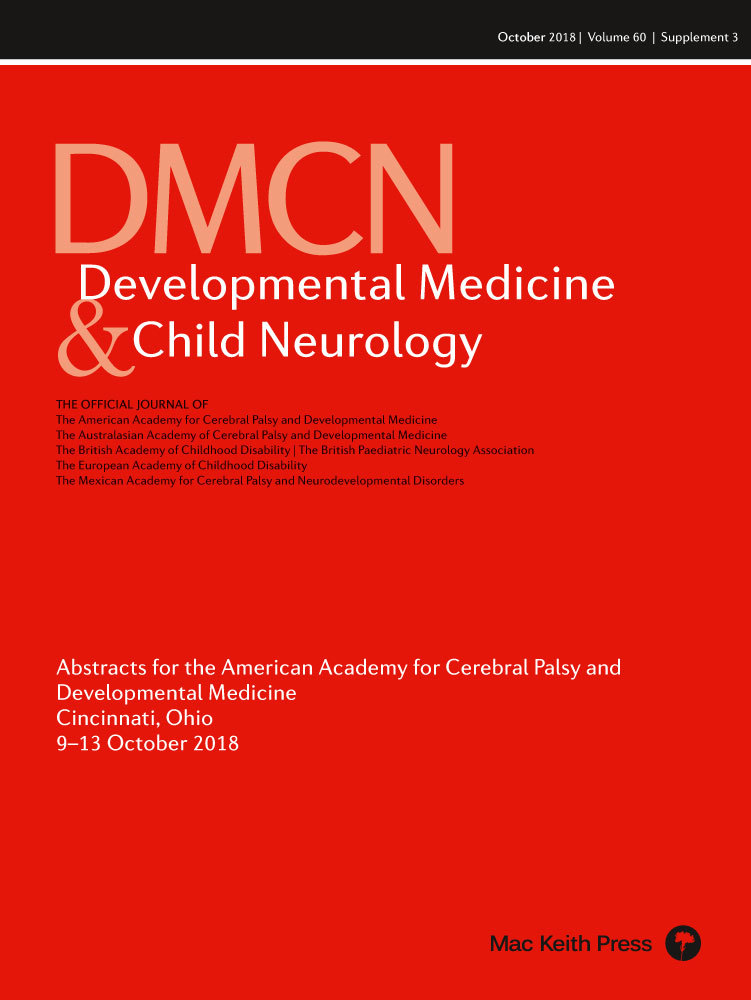Disparities in early intervention referral and access among a low-income safety net population: a cohort study using 2013–2015 linked administrative data
D2
B McManus1, Z Richardson1, M Schenkman2, E Morrato1
1Colorado School of Public Health, Aurora, CO, USA; 2University of Colorado Physical Therapy Program, Denver, CO, USA
Background and Objective(s): Although the American Academy of Pediatrics recommends referral to early intervention (EI) for infants and toddlers with developmental delays, EI service use of referred children has not been evaluated. Previous studies suggest that although universal development screening in primary care has increased, rates of EI referral remain low. Previous literature has focused on receipt of EI referral or an EI eligibility evaluation. To this end, there is a dearth of literature examining referred children to determine service use patterns. The purpose of this study was to examine factors associated with EI referral and core EI service use (e.g., physical and occupational therapy).
Study Design: Secondary Data Analysis.
Study Participants & Setting: Data were drawn from linked pediatric primary care and early intervention data for 14,710 children with a developmental condition within a large, urban safety net health system. Among the sample, 722 children were referred to EI and received a core EI service (e.g., physical or occupational therapy) [ages: less than 12 months, 62% (n=448), 12–24 months, 28.7% (n=207), and greater than 24 months, 9.3% (n=67), 36.7% (n=265) were female].
Materials/Methods: Primary care and EI administrative databases (2013–2015) were linked. Outcomes were EI referral and service use. Adjusted odds ratios (ORs), 95% confidence interval (CI) were used to estimate outcomes controlling for child characteristics.
Results: Overall, 14% of sample children were referred; of referred children, 36% received EI services. Sample EI children were predominantly below the Federal Poverty Level (91.8%), Hispanic (73.7%), publically insured (87.7%), and had a developmental delay (87.7%). Having the most severe developmental condition was positively associated with EI referral [OR=5.34, (3.7, 7.6)]. Children with lower odds of EI referral were Black, non-Hispanic (BNH) [OR=0.81 (0.7, 1.0)], female [OR=0.59, (0.5, 0.6)], and had a diagnosed condition ([OR=0.66 (0.5, 0.9)]. Regarding EI therapy, children with a diagnosed condition had higher odds [OR=2.99, (1.4, 6.4)] whereas publically insured children [OR=0.39, (0.2, 0.9)] had lower odds of receiving some therapies. Baseline EI functional skills were associated with receipt of EI therapies.
Conclusions/Significance: We found low rates of EI referral and service use. The results of this study suggest areas for improving EI outreach and service use. For example, interventions to improve EI referral should target children who are black, non-Hispanic, female, and with a diagnosis. Interventions to optimize EI service use should target publically insured children and incorporate baseline functional measures. To this end, this study serves as a framework that could be replicated in other EI programs to improve EI care quality.




